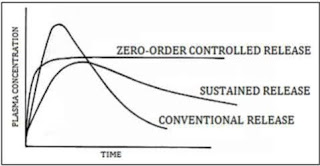Potentiometric titration
Potentiometry
Potentiometry is an analytical method in which the amount of a substance in solution is determined either directly or indirectly from the measurement of electromotive (e.m.f) between two electrodes that are dipped into the solution.
Potentiometric titration
Titration in which the end point is determined with the help of potential change is called potentiometric titration. In this titration, the measurement of potential is important because the potential developed by a particular electrode immersed in a solution, is dependent on the presence of some entity in the solution and on its concentration in the solution. There are four types of potentiometric titration
• Acid Base titration
• Oxidation-reduction titration
• Complexometric titration
• Precipitation titration
Reference Electrode
A reference electrode is one which develops a definite potential to which the potential of other electrode can be compared.
Indicator Electrode
An indicating electrode is one which develops a potential that is dependent on the quality of the substance in the solution which we wish to measure.
Anode
Anode is the electrode at which oxidation occurs. It has positive charge.
Cathode
Cathode is the electrode at which reduction occurs. It has negative charge.
Electrolyte
Electrolyte is the salt solution in a cell.
Electrochemical cell
A device for producing a electrical current from a chemical reaction is called an electrochemical cell.
Electrode motive force or cell potential
The flow of current through the circuit is determined by the push of electrons at the anode and attraction of electron at the cathode.
Salt Bridge
The half cells in an electrochemical cell are usually connected by a tube termed as salt bridge. The tube of the salt bridge is filled with an electrolyte such as NaCl, KCl, K2SO4.
The salt bridge provides a passage to ions from one compartment to other compartment without extensive mixing of the two solutions. With this ion flow, the circuit is complete and the electrons pass freely through the wire to keep the net charge zero in the two compartments. This has the effect of reducing the junction potential to such a small value that it can be neglected.
Role of salt bridge
• It connects the solution of two half cells and complete circuit.
• It prevents diffusion of solutions from one half cell to another.
• It keeps the solutions in two half cell electrically neutral.
• It prevents liquid-liquid junction potential.
PRINCIPLE
The principle involved in the potentiometry is when the pair of electrodes is placed in the sample solution it shows the potential difference by the addition of the titrant or by the change in the concentration of the ions.
The reference electrode is the electrode which consists of its own potential value and it is stable when dipped into the sample solution.
The salt bridge is used to prevent the interference of the analyte solution with the reference solution.
Analyte solution is the sample solution whose potential is to be measured.
The indicator electrode is the electrode which responds to the changes in the potential of the analyte solution.
The electromotive force of the complete cell is given by the following equation: Ecell= EReference+ E Indicator + E junction where Ereference is the electromotive force of the reference electrode; Eindicator is the electromotive force of the indicator electrode; Ejunction is the electromotive force at the junction of the liquid. The units for the potential are mille volts denoted by mV.
THEORY
The main theory involved in the potentiometry is when the known potential electrode immersed in the sample solution then the potential is given by the Nernst equation:
E = E0 + (0.592/n) log c where E is the potential of the solution; E0 is the standard electrode potential; n is the valency of the ions; c is the concentration of the sample solution; 0.0592 is the value obtained from the RT/F,
where
R is the gas constant, T is the temperature in Kelvin, F is the Faraday’s constant.
This can be achieved by the charge transfer process by the following steps:
..Electrons move from the reference electrode to the indicator electrode. ..The positive ions move to the cathode and negative ions move to the anode ..On the surface of the electrodes, electrons are transferred to ions.
REFERENCE
ELECTRODES
Referee electrode can be divided into five classes.
1. Standard Hydrogen Electrode.
2. Calomel Electrode.
3. Saturated Potassium Sulphate Electrode.
4. Silver-Silver chloride Electrode.
5. Weston Electrode.
Standard
Hydrogen Electrode (SHE):
The standard hydrogen electrode develops a potential which is artitrarily considered to be zero and all other electrodes develop a potential which may be positive or negative with respect to H₂ - ekctrode. The potential of Standard hydrogen electrode can be written as
E=E0+ RT/2F
In (aH+)2/PH2
|
|
The standard hydrogen electrode (SHE) is constructed
from a platinum wire fused in a glass tube and having
a strong platinum plate, with a finely divided platinum black.
The platinum plate provide a lange surface area for
hydrogen to get adserbed or it. The glass tube has an inlet system
at its top for entering pure H₂ gas at 1 atm at 250c into
the acid solution. enlained in a glass vessel and has a
number of holes at its base for the escape of excess H2-gas bubble.
A part of H₂ gas is adsorbed on the surface platinised platinum
electrode while excess of H2 gas escape through the hole.
The standard hydrogen electrode is written diagrammatically:
Pt||H2 (r-1 atom) | H+
The standard hydrogen electrode may act as an anode or cathode depending upen the half cell with which it is coupled by means of the salt bridge. H2 gas is oxidized to H-ion, when the electrode is anode and the reverse reaction takes place when the electrode is callede.
The reduelien half cell reaction , is written as -
Cathod- 2H+(a=1m) +2e- = H2(r=1 atom)
Anod. H2 (p=1 atom) = 2H+ (r=1atom) +2e- -
If a hydrogen electrode is immersed in an acid solution, the pH of which to ne determined the half cell are coupled with the normal hydregen electrode by neans of saturated KCl salt bridge in order to eliminate the liquid junction potential.
The electromotive force of the resulting cell can be calculated in the following way -
|
|
Advantages:
1. It may be used in the presence of strong oxidizing and reducing agent in various media and presence of protein which interferes with the operation of other electrode.
2. It can be used for solution having pH 2-10 with some special glass measurements can be extended to pH value upto 14.
3. It is simple to operate.
4. The equilibrium is reached quickly. Disadvantages
1. In this electrode the bulb is very fragile and therefore has to be used with great care.
2. As the glass membrane has a very high electrical resistance the ordinary potentiometer cannot be used for measuring the potential of glass electrode.
Thus the electronic potentiometer is used.



Comments
Post a Comment
Thanks